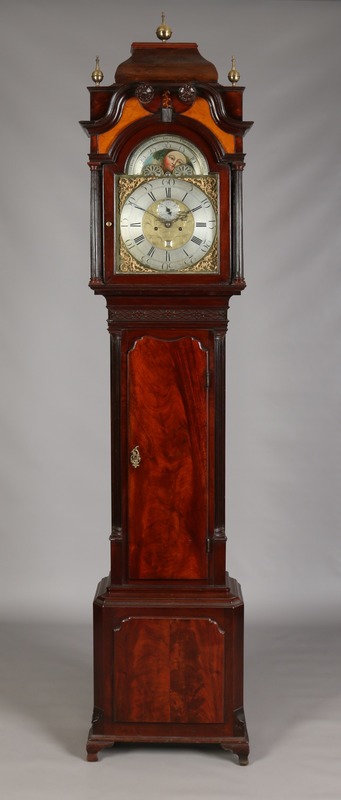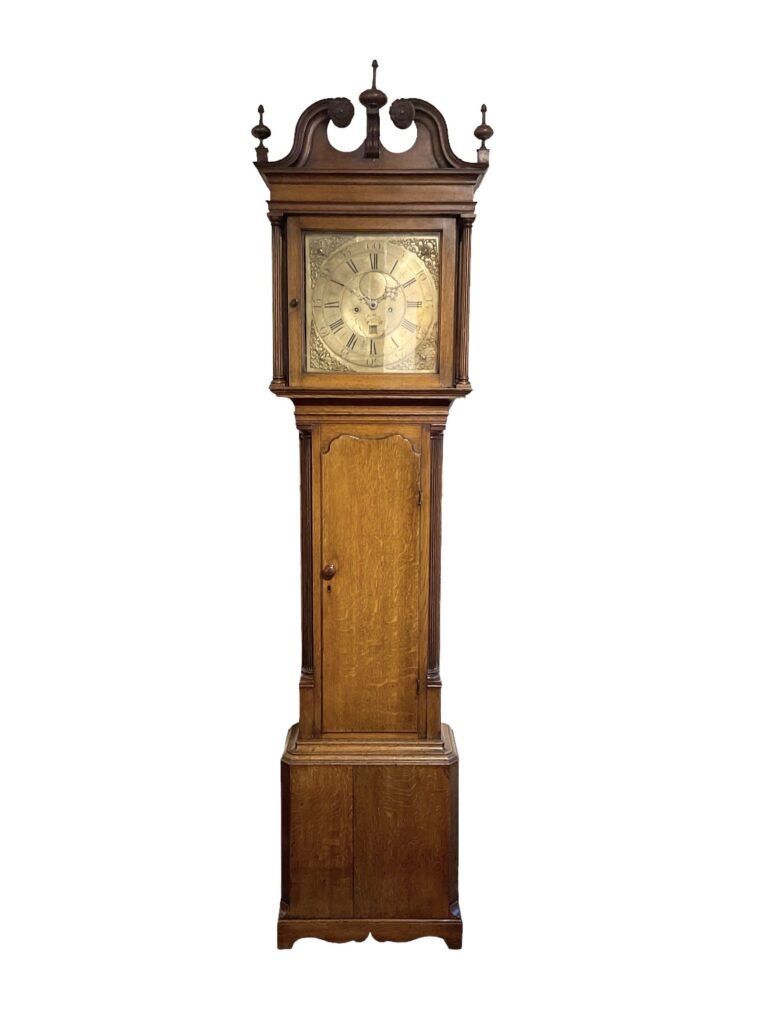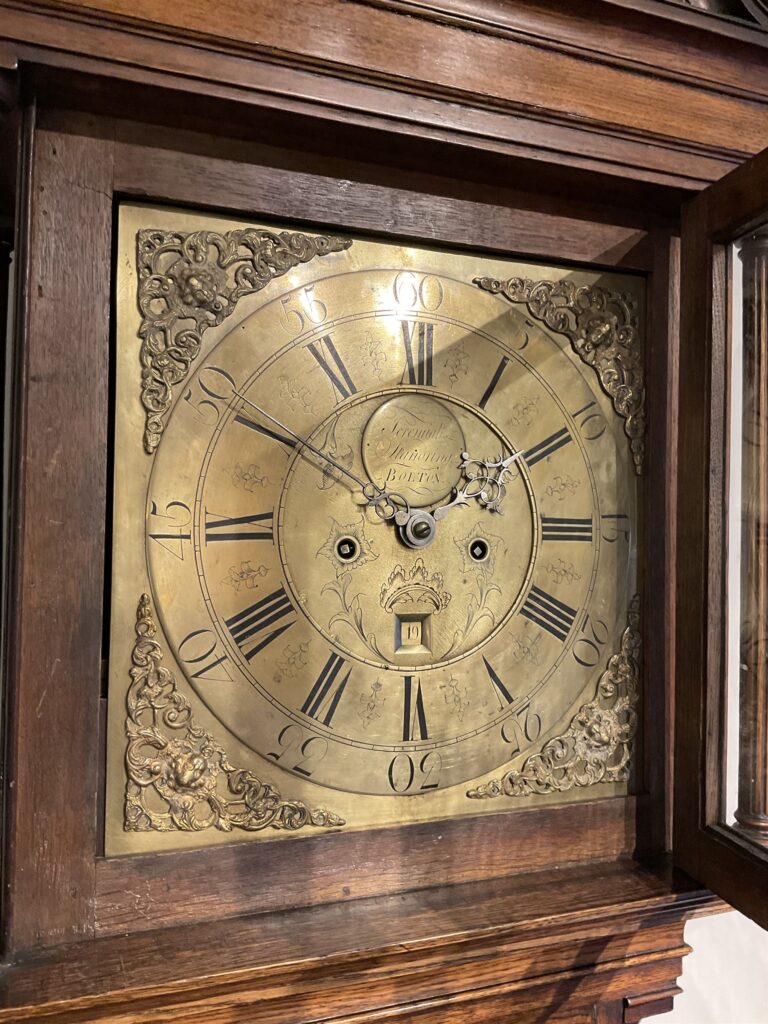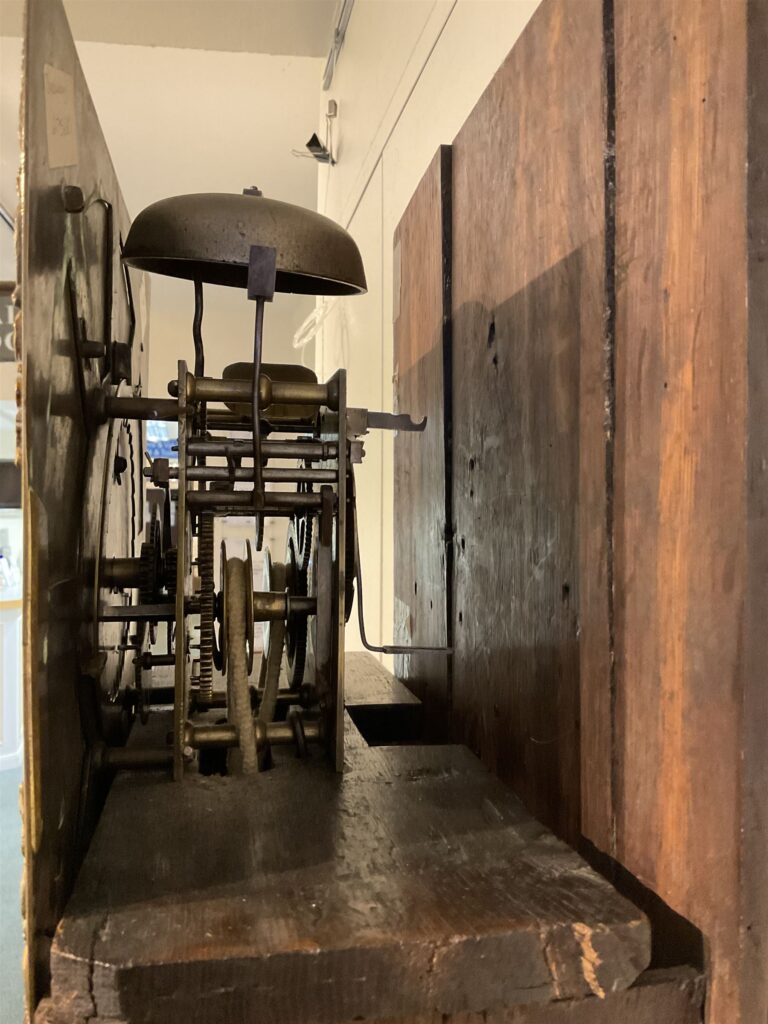Jeremiah Standring of Great Bolton, a clockmaker, born in 1712 in Rochdale. He married in Janet Clayton in Bolton Parish Church in 1742, and he died in 22nd March 1782 and was buried in Bolton Parish Church.
He started clockmaking about 1740, and is listed as a Clockmaker at his marriage, although he is known to have made complicated 8 day and 3 train ting-tang clocks in 1750, he was still making 30 hour clocks in about 1770.
As a Clockmaker in the period of 1760-70, he made some very fine moon dial clocks housed in magnificent mahogany cases, one of which is in the Lady Lever art Gallery, Port Sunlight. The Science Museum London also holds a Long Case Clock by Standring (here).
A George III longcase clock by Jeremiah Standring.
The brass arch topped dial incorporates a moon roller, silvered chapter ring, subsidiary seconds, date aperture and is inscribed “Time flies pursue it man. For why? Thy days are but a span.
The four pillar eight day movement with anchor escapement chimes hourly on a bell. The figured mahognay case with pagoda and swan neck hood is adorned with maple panels, fluted column supports and blind fret carving. The trunk with broad door is flanked by a pair of quarter columns over a stepped base supported on ogee bracket feet.

A 30-hour 18th century oak cased longcase clock by Jeremiah Standring of Bolton, with a swan’s neck pediment on a flat top with a blind frieze beneath, square brass dial flanked by reeded pilasters and wooden capitals, long trunk door with a concave wavy top, trunk with reeded quarter columns on a rectangular plinth on a decorative skirting, dial with a formerly silvered chapter ring and engraved dial centre, with Roman numerals, five minute Arabic’s, square date aperture, circular boss engraved with the makers name, cast spandrels and dummy winding arbors, dial pinned directly to a rope driven countwheel striking movement, striking the hours on a bell. With weight and pendulum. 30-hour clocks with dummy winding arbors are more commonly found on later 19th century painted dial longcase clocks, this is an earlier example by Standring.


